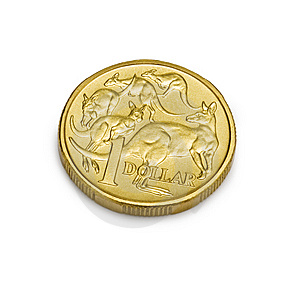 Today marks 30 years since our dollar was floated against international currencies. Today with some rate lowering by our Reserve Bank the Australian Dollar is around $0.91 US cents. Here is an update to an article we wrote back in 2010 when the dollar hit above parity (above $1.00 US for the first time in it’s history since floating).
Today marks 30 years since our dollar was floated against international currencies. Today with some rate lowering by our Reserve Bank the Australian Dollar is around $0.91 US cents. Here is an update to an article we wrote back in 2010 when the dollar hit above parity (above $1.00 US for the first time in it’s history since floating).
Buying Power
If our dollar is at or goes above $1.00 US things that are imported into Australia and purchased in US dollars should go down in value, petrol, IT toys I have been eyeing off an apple iPad to complete my apple collection! On the flip side Australian businesses who are exporters will be suffering which includes our farmers who export goods.
What about our investments?
Any businesses that export from Australia may have some short term reduction of profit with the dollar increase, while on the flip side companies that are importers will benefit. The main difference will be if you own international assets or managed investments as foreign investments exposure. Your portfolio could be impacted by changes in exchange rates. This is because international shares are purchased in the currency of their home country. When money is converted into a different currency to make an investment, changes in the value of that currency relative to the Australian dollar will affect the total loss or gain on the investment when the money is converted back. Let’s explore the impact of these fluctuations on your international investments. A rising Australian dollar will decrease the value of your international investments. This is because your overseas shares now buy less Australian dollars than when you first invested.
Let’s assume you have bought 1000 shares in an American company at a value of $50 each. If the share price remains constant but the value of the Australian dollar goes up against the American dollar the actual value of your investment falls. In this example there is no actual change in the value of the American company, however the value of your investment has fallen. As a result of the rising Australian dollar, the share value in US dollars has fallen by $8,929.
Similarily, a falling Australian dollar will increase the value of your international investments.
As a result of the falling Australian dollar, the share value in US Dollars has risen by $8,929. In the example above, the American stock has not changed in value but because the Australian dollar has changed, the value of the investment changes.
Can you manage currency risk?
Hedging is a strategy used in an attempt to reduce the risk and impact of adverse currency movements. Essentially it is seen as an activity whereby an investor seeks to protect an investment by taking a counteracting position – ie the investor may hedge some currency exposures back into Australian dollars to protect the investment when the dollar is rising. The merits of currency hedging have been the subject of considerable controversy in investment circles over the years. As might be expected, there are multiple viewpoints both for and against hedging away currency risks. As different approaches to currency hedging within a portfolio can lead to very different outcomes, it’s important to understand your investment manager’s approach.
To hedge… Hedging generally involves the use of derivatives. A fund manager that uses hedging may either fully hedge their portfolio or partially hedge their portfolio to reduce the impact of currency fluctuations.
Or not to hedge…? An unhedged portfolio means that the fund manager does not engage in any activity to protect the currency, nor try to add value through currency transactions. Generally the returns on a hedged fund will more closely reflect the return of the actual investments themselves than would an unhedged fund as there is a much smaller currency impact on the overall return.
What is better? Like all investment decisions, that depends on your individual investment aims and risk objectives. Whether a portfolio should be hedged, hinges on what global assets are being invested in and your risk/return objectives.
For further information contact our office or drop us an email.
Scott Malcolm (scott@money-mechanics.com.au) is Director of Money Mechanics (ph: 6257 5557) a fee for service advice firm who are authorised to provide financial advice through PATRON Financial Advice AFSL 307379. The information provided on this article is of a general nature only. It has been prepared without taking into account your objectives, financial situation or needs. Before acting on this information you should consider its appropriateness having regard to your own objectives, financial situation and needs.
